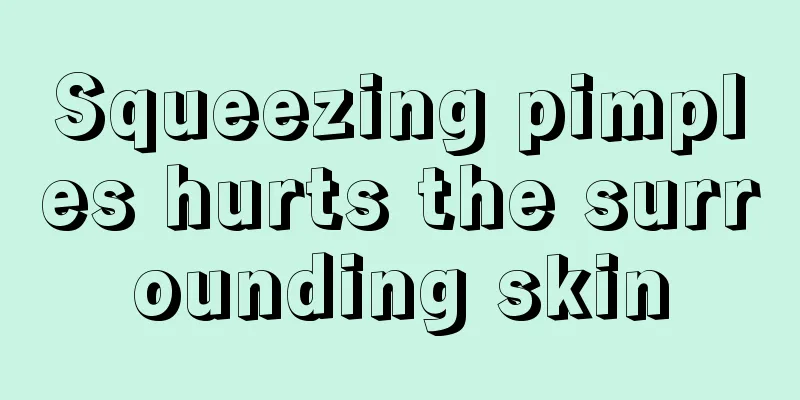What's wrong with the pain in the lower back

|
When most people experience pain in their waist, they think it is caused by lumbar disease, because the incidence of lumbar disease in various populations has been increasing in recent years. But lower back pain is not only caused by lumbar spondylosis, it may also be caused by some soft tissue injuries in the lower back. So what exactly is the pain in the waist caused by soft tissue injury? Today, let those friends who often suffer from lower back pain learn about it. The soft tissue of the waist is strained, and most of the low back pain we see usually belongs to this category. Clinically, it includes lumbar muscle strain, interspinous ligament strain, facet joint syndrome, and third lumbar vertebra transverse process syndrome. Pathogenesis Long-term forced posture (bending over, hunching back) and weight-bearing work will cause the lumbar muscles to be in a state of continuous hypertension Position force status of lumbar soft tissue strain. Over time, it will cause excessive traction damage to the lumbar muscles and attachment points, resulting in inflammatory reactions such as blood supply disorders, congestion, hypoxia and increased exudation in the local soft tissues, causing primary lumbar muscle strain, or improper treatment after acute lumbar sprain, resulting in residual sequelae due to failure to completely repair the damaged tissue, or repeated minor injuries leading to adhesion of muscle fascia and prolongation of pain, which becomes chronic low back pain. People with congenital malformations in the lumbar and sacral region (such as lumbar sacralization, sacral lumbarization, occult spina bifida, hemivertebra, etc.) and pathological changes in the lumbar bones and joints may suffer from lumbar muscle strain. Secondly, a damp and cold environment and physical weakness can also easily cause illness. Medical treatment (1) Massage: In the early stages, you can use kneading, rolling, pushing, vibration and other techniques, or use an electric vibrator for massage. The technique should be gentle and can be combined with the Ahshi point. In the later stage, it is necessary to add techniques such as scraping, plucking, twisting, rolling, dividing and regulating tendons and shaking the lumbar sacral area. This type of technique has a high stimulation intensity and can cause obvious feeling of soreness and swelling. The second and third lumbar vertebrae transverse processes, the posterior and medial sides of the iliac crest and other areas should be scraped and pulled more often. Once a day, about 20 minutes. (2) Medical gymnastics to relax the waist: Suitable for any stage of illness, the movements include relaxing exercises in all directions of the spine, such as selecting movements such as "Cloud Hands" and "Wild Horse's Mane" in Tai Chi, or standing with hands on the ribs to do waist rotation movements, or hanging with both hands on a bar and standing on toes to do waist rotation movements, etc. The rhythm of the movements should be slow, and the range of motion does not need to reach the limit. Each movement can be repeated more than 10 times, each exercise lasting 10 to 15 minutes, 2 to 3 times a day or more. Rub both sides of your waist with your fists before and after each exercise. (3) Corrective gymnastics: Selective contraction and stretching of the lumbar soft tissues according to the different morphological changes of the patient's spine to correct scoliosis and rotation. For example, when doing lateral flexion, rotation and extension in the opposite direction of scoliosis in a hanging or lying position, you need to practice contracting the abdominal and gluteal muscles when the lumbar spine is excessively lordotic. (4) Keep exercising your back muscles: ① Lie prone with your hands on your sides, raise your chest and head, and stretch your upper limbs as far back as possible. Hold for a few seconds and then relax. ② Lie prone with your hands still on your sides, stretch your lower limbs back and lift them as far as you can, hold for a few seconds, then relax. ③ Lie prone, lift your head and chest, and stretch your upper and lower limbs backward as far as possible at the same time, forming a boat shape. Hold for a few seconds, then relax. According to your physical condition, you can practice more than 10 times each session and 2 to 3 times a day. |
<<: What to do if the eyeball is red, swollen and painful
>>: What's the matter with the pain under the toe
Recommend
What juice to drink for a cold
People with common colds generally cannot drink c...
Symptoms of knee dislocation
Knee dislocation is a relatively common phenomeno...
What are the symptoms of cardiovascular disease
Cardiovascular disease is a common clinical disea...
5 healthy lifestyles to effectively delay aging
The moon waxes and wanes, and people are born, gr...
What to do if the yew leaves are dry
Yew is actually a relatively easy plant to grow, ...
What are the early symptoms of lung cancer? The three most obvious early symptoms of lung cancer
What are the typical symptoms of early lung cance...
How should tooth decay be treated?
Nowadays, dental problems are troubling more and ...
What is the best way to treat a cough?
Cough is a very common disease and also a symptom...
Is it good to have canine teeth? Here are three points to tell you
Beautiful teeth are a sign of good appearance. Ha...
How do adolescents get depression? It is mainly caused by these 5 reasons
With the development of society, the psychologica...
What activities can be done after colon cancer surgery
If you are taking chemotherapy drugs, and it is a...
It turns out that these two types of Chinese medicine can be used for cerebral infarction
Cerebral infarction is a common disease in daily ...
How to fix rice that is too wet
Normally, when you are stewing rice, the rice is ...
Why do more people suffer from insomnia in autumn? If you want to sleep well, nourishing the liver and detoxifying is the key
Insomnia in spring is caused by liver disease; in...
How to treat bad breath
With the faster and faster development of moderni...









